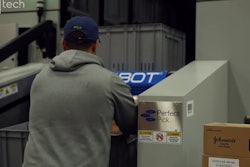Over the last decade, there has been a health-conscious shift in consumer tastes in snacks. Growing concerns about eating foods that are high in calories, fat, sugar and sodium, and use artificial ingredients and hormones, have led consumers to seek more nutritious alternatives to their traditional snack foods. In a Nielsen Global Health & Wellness Survey of 30,000 consumers, nearly 90 percent said they are willing to pay more for healthier foods.
To meet this growing demand, food manufacturers are introducing more reduced-fat and low-calorie options, as well as 100-calories packs for individuals focused on portion control. Moreover, many companies are seizing the healthy snack market by offering organic, non-GMO and gluten-free products, along with new options like kale chips, chia bars and roasted chickpeas, presenting consumers with more choices and brand variety than ever before.
The rise in alternative snack options has been a source of consistent growth for the food and beverage industry, outpacing other categories in the market with a compound annual growth rate (CAGR) of 4.7 percent according to a report by market research firm Packaged Facts. While this is all great news for company business and sales numbers, the surge in products — and with it new SKUs — is putting a strain on warehouses and distribution centers to optimally store and manage their inventory.
Fortunately, with consumers open to paying premium prices for healthier snack choices, companies have more revenue available to focus on capital investments like automation technologies that can not only alleviate these warehouse management challenges, but also improve operations. One solution that companies should look towards is a Warehouse Execution System (WES).
Manage Everything in a Single Application
Typically, most manufacturers and distributors use a warehouse management system (WMS) and warehouse control system (WCS) as separate but interdependent applications to oversee product movement and warehouse operations. However, this is actually less efficient as it increases the complexity of transaction processing, in addition to requiring complicated integrations.
It is more efficient to use a WES since it streamlines all warehouse activities into a single application. Notably, a WES offers the inventory management, storage optimization and traceability features of a WMS, as well as the automation control components of a WCS, which provide a real-time view of material handling equipment, labor status and other key performance indicators (KPIs) critical for efficient warehouse operations. In short, it simplifies all communication and controls within the warehouse to support the optimal movement of product.
Improve Food Traceability
While manufacturers are looking to provide healthier snack options to consumers, it’s equally important for them to make sure the products they put on the market are safe for consumption. What good is eating healthy if there could be a potential food safety risk?
With real-time management of inventory and order information, a WES can help support manufacturers in their food safety initiatives, especially when faced with a recall. Namely, a WES keeps accurate data on the movement of products throughout the entire warehouse, including lot numbers and what SKUs were tied to which orders. Using this data, companies can definitively pinpoint which orders contained affected products and where they were shipped, in order to pull those products off store shelves and out of consumers' homes, thereby ensuring a safer food supply chain.
Store More in Less Space
When a WES is paired with an Automated Storage and Retrieval System (AS/RS), snack food manufacturers and distributors can realize superior control over material handling operations, including the efficient movement, storage, picking and creation of customer orders. But an AS/RS has the added benefit of improving space utilization within the warehouse — perfect for companies that are running out of warehousing space given the growing number of SKUs.
By retrofitting an existing warehouse with a high-density, multiple-deep AS/RS, manufacturers and distributors can optimize space in a particular location. The warehouse can “do more with less” — store more product and more SKUs in a smaller amount of space, thereby eliminating the need for costly new construction or expansions. In fact, organizations that implement an AS/RS in an existing facility typically expand their storage capacity by 30 to 50 percent. With these space savings, companies are better poised to accommodate any new SKUs that come with the next healthy snack trend.
Consumer demand for more nutritional snack options shows no signs of slowing down. According to the Packaged Facts report mentioned above, the healthy snack segment of the food and beverage industry is expected to see a CAGR of 5.7 percent between 2016 and 2020. Snack food companies that implement warehouse automation technologies like a WES and AS/RS will be ready to meet this growing consumer demand, both in their product offerings to the market and in their warehouse operations.























